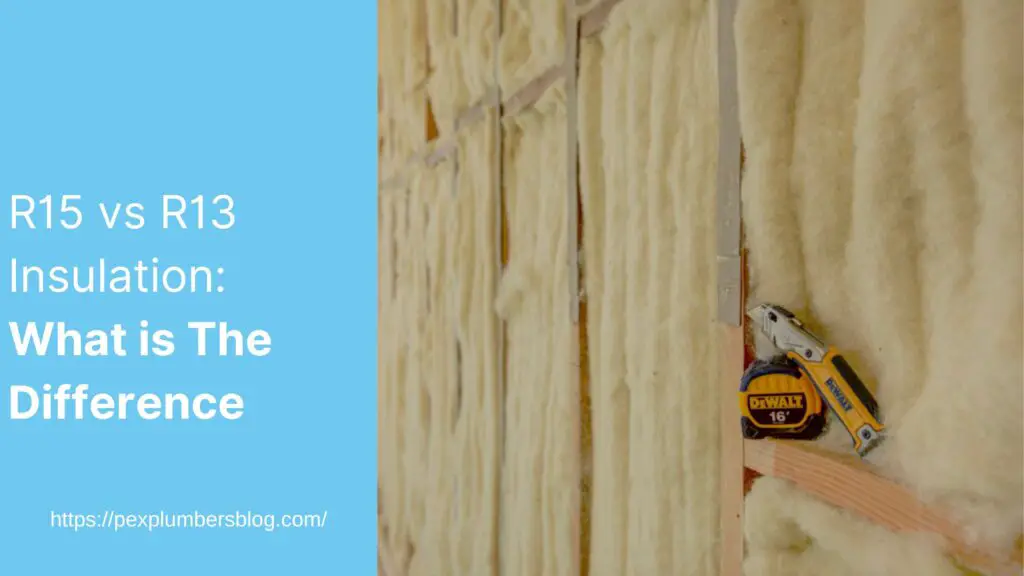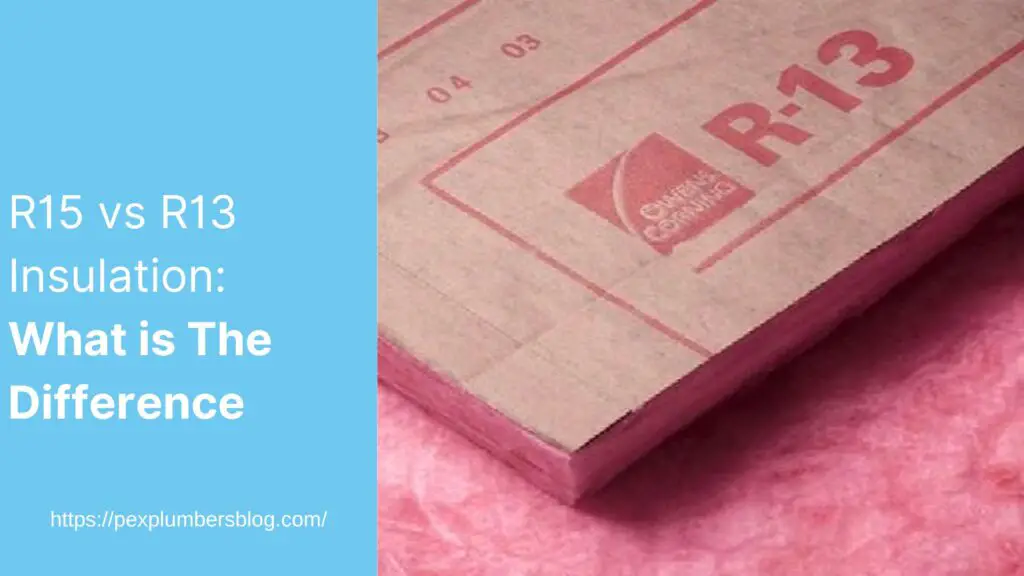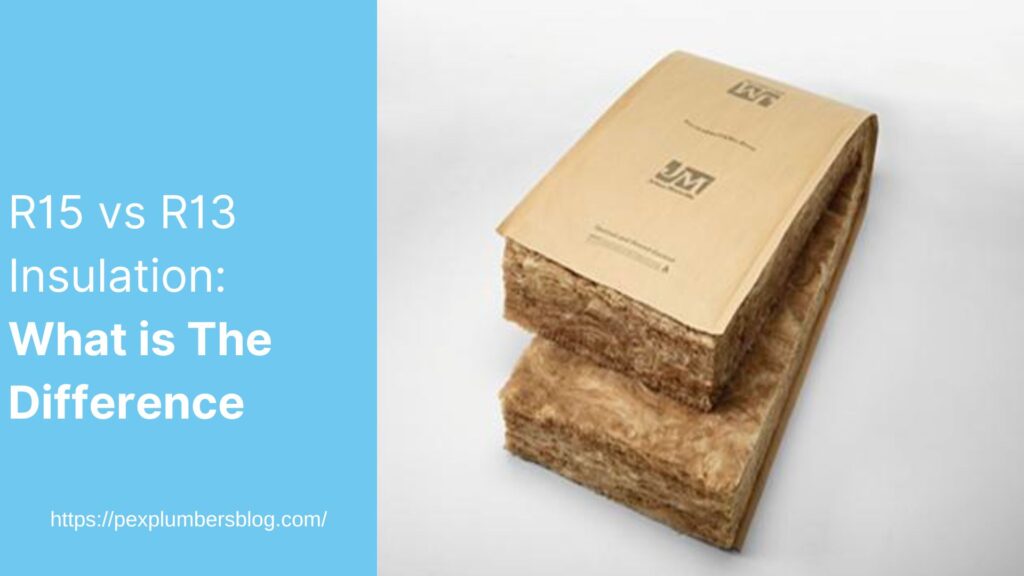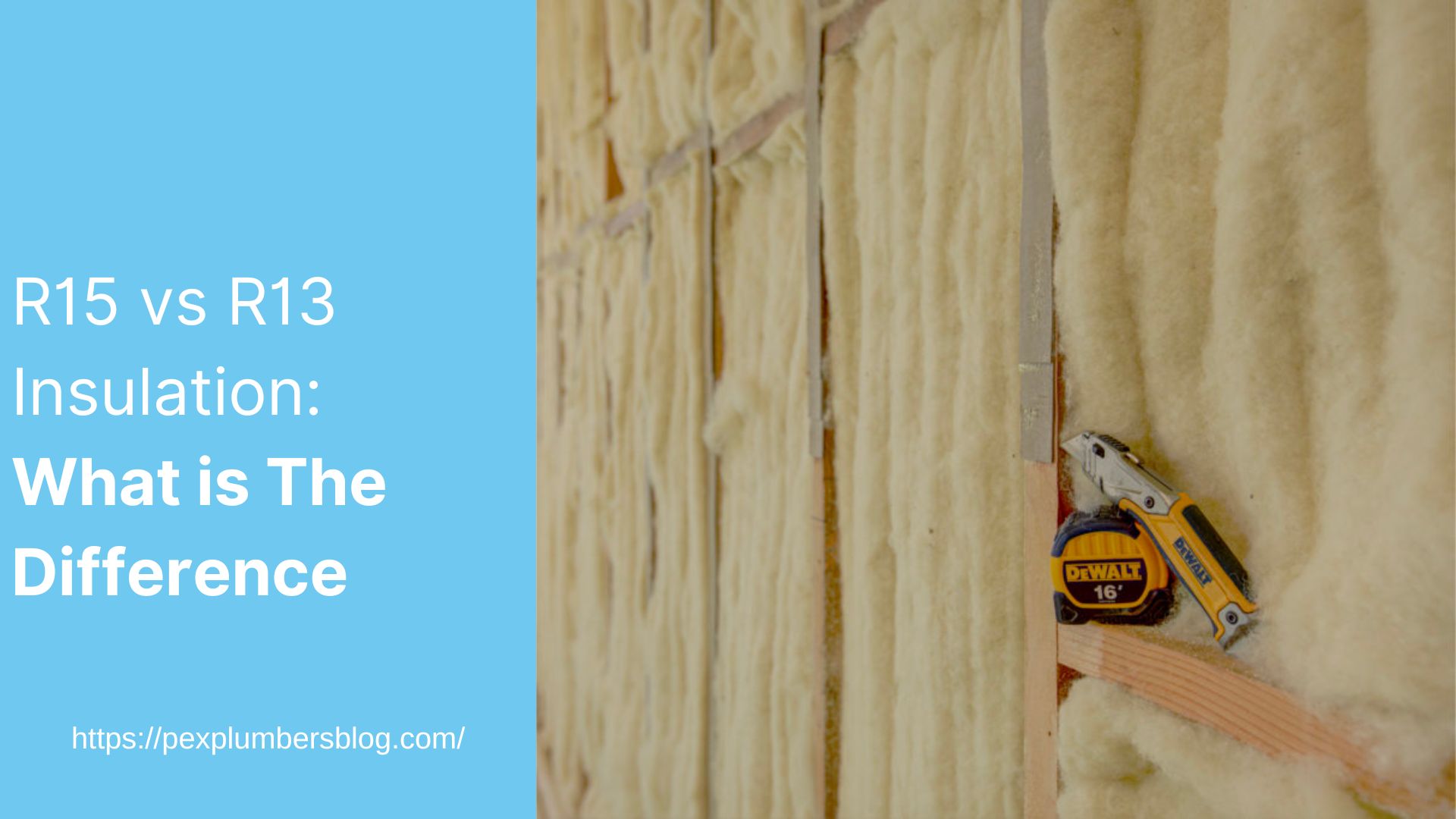When considering insulation options for your home, it’s crucial to compare the R-values of R13 vs R15 Insulation. The R-value indicates a material’s ability to resist heat flow, with higher values offering greater resistance. Therefore, it’s important to pay attention to the R-value when selecting the best insulation for your needs.
Insulation has a significant impact on various aspects of your home, including energy efficiency, moisture management, pest prevention, and more. So, choosing the right R-value of insulation is essential to ensure maximum benefits for your home.

So, getting the R-value wrong can cost you a lot.
In the case of R13 and R15, the former has a lower R-value than the latter. But does that mean that R15 is better than R13? Is there any difference between R13 and R15?
This post takes a closer look at the two insulations to help you understand what each entails, the advantages of each, and more to help you easily decide which one to get.
What Is R13 Insulation?

R13 insulation comes with a 3-5/8-inch thickness and is great on walls, floor, and ceiling cavities. It looks like a giant blanket that insulates your home without obstructing the electrical and plumbing systems.
R13 insulation can feature different materials, including plastic fibers, fiberglass, or mineral-based materials. It can also exist in spray foams or insulated concrete forms.
Whichever shape or form it comes in, the purpose of R13 is to insulate your home and maintain desired room temperature.
Relevant post >> PEX Expansion Vs Crimp
Advantages of Using R13
R13 insulation is more suitable for those who reside in areas with relatively warm climates. Using more layers of this insulation can help increase thermal resistance. Below are the key benefits of using R13 insulation material in your home:
1. Great for Warmer Climates:
R13 insulation works well in mild and moderate climates with substantial warmth. When added to external walls, floors, and basements, it can prevent drastic heat loss or keep away cold.
2. Block Noise:
With R13 insulation, you can block out unwanted sounds. However, the type of insulation material you choose dictates the noise reduction efficiency. For example, R13 spray foam insulation is more effective in blocking noise than fiberglass insulation.
However, you’d want to check your state’s soundproofing regulations before picking any insulation material.
3. Regulates Moisture:
Faced R13 insulation materials contain waterproof materials that prevent absorption of all kinds of moisture. This makes it suitable for the attic, roof, or basement, where insulation material will absorb excessive humidity.
4. Improved Energy-Efficiency:
You can also count on R13 insulation to significantly improve your home’s energy efficiency. With the right material, this insulation can help you manage the flow of air in and out of your home. This, in turn, keeps the AC system running optimally, reducing energy consumption.
5. Great for Tight Spaces:
R13 is an ideal insulation solution for tight spaces with a smaller surface area. This means you can use it in the attic, basement, or virtually any room inside your home.
6. Wide Selection of Materials:
With R13 insulation, you can choose from a wide variety of materials, including foam, concrete, fiberglass, and so on. Since each of these materials have exceptional thermal resistance, you can pick one that works well for you.
7. Affordability:
R13 insulation is more affordable than R15 insulation, mainly because of differences in heat resistance. If you’re insulating your home on a budget, R13 insulation is the obvious choice.
What Is R15 Insulation?

R15 insulation has a slightly higher thermal rating than R13. It also comes in different materials, including cellulose spray, fiberglass, foam, and polystyrene. Your choice of insulation material will depend on your unique needs.
For instance, the cellulose spray and polystyrene options are great at preventing heat transfer. Fiberglass and foam are less effective in this area.
If you’re looking for a non-toxic, fire-resistant option, you should keep off foam material as it has the worst fire resistance. It can easily catch fire at 300 degrees.
Advantages of Using R15
R15 has better thermal resistance than the R13 insulation option. But this isn’t the only benefit you get by using this type of insulation in your home. Below is a list of top benefits tied to the R15 insulation.
1. Higher Heat Resistance:
R15 insulation has a slightly higher heat resistance than R13 insulation. It works well in regions that usually receive hot weather. It’s great for insulating attics, ceilings, basements, and walls alike.
2. Reducing Environment Noise:
With a thickness ranging from 3.5 to 4 inches, R15 insulation can effectively reduce unwanted outside noise from reaching your house. The extent to which it can block noise depends on the thickness and material used.
3. Regulating Moisture:
Like R13 insulation, faced R15 materials can protect your home against excessive humidity. This makes it a good choice for insulating frequently-exposed areas like the attic, ceiling, and basement.
4. Pest Protection:
R15 insulation effectively protects your home against pest infestation. It can ward off harmful pests that could cause severe damage to materials in your home or cause diseases.
5. Versatile:
R15 insulation is universal and excellent for external walls, floors, attics, and basements. Due to its higher heat resistance, the material is also suitable for use in warmer areas with plenty of sunshine.
Comparing R15 vs R13 Insulation
When compared head-to-head, R13 and R15 have several differences as outlined below:
| ● R15 has a higher heat resistance than R13. |
| ● While both R13 and R15 have faced materials, only R15 has moisture-resistant materials. |
| ● Both R13 and R15 can help reduce noise. But for having a thicker built, the R15 can do it slightly better. |
| ● R15 is more energy-efficient than insulations with a lower R-value. That’s why if you are thinking about costs R15 is the one to go for. |
| ● And if you are on a budget R13 will be a better choice. |
| ● Although R15 controls moisture better, the differences are minimal. |
| ● R13 can fit in narrow spaces, but R15 might be too bulky for that. |
| ● R15 is mostly used for attics, exterior walls, and places where heavy-duty insulation is needed. R13 is better for comparatively light insulation. |
| ● R13 is good for the southeast climate of the USA. While R15 is good for colder climates of the country. |
The actual difference between R13 and R15 is that the latter has a slightly higher resistance to heat flow. You can easily confirm this by checking the insulation R-value of each of them. That is, the R15 sits higher (at 15) on the heat resistance chart than the R13 (at 13).
However, the difference in heat resistance between the two isn’t significant (13 and 15 are pretty close; keep in mind that the value can go as high as 60!). And the two are almost similar in performance.
Which One Is For Me?
The two insulations aren’t much different and you can go with either R13 or R15 depending on your unique needs. If you’re on a budget and need to insulate a smaller space, R13 insulation would do just fine.
However, if you want insulation materials for outer walls, the floor, the attic, or the basement, R15 insulation is the best.
Note: Here we discuss Top Rated Pipe Insulation for indoor and outdoor, You can check it out.
FAQ
Can you put R15 in 2×4 wall?
Yes, R15 insulation can be installed in a 2×4 wall, but it may be a tighter fit than lower R-value insulation options. It’s important to ensure that the insulation fits properly without compressing or leaving gaps, as this can reduce its effectiveness. Additionally, the building codes in your area may require a minimum R-value for insulation, so it’s important to check with your local authorities before making any decisions.
Is R13 insulation enough?
Whether R13 insulation is enough depends on the climate, desired energy efficiency, and building construction. It may be sufficient in warmer climates but not in colder ones. The insulation effectiveness can also be impacted by air leaks or gaps. A professional can help determine the appropriate insulation for your needs.
What temperature is R-13 insulation good for?
R-13 insulation doesn’t have a specific temperature range since its main purpose is to slow heat transfer. Its effectiveness depends on factors like climate zone and building construction. Proper installation without gaps or compression is important. A professional can help determine the appropriate insulation for your needs.
Is R15 insulation flammable?
R15 insulation is usually treated with fire retardants to reduce its flammability. It’s important to follow safety guidelines when installing insulation to minimize the risk of fire. Consult a professional or manufacturer if you have specific concerns about the flammability of a particular insulation material.
Can I double up R15 insulation?
Doubling up R15 insulation can increase energy efficiency, but proper installation is important to avoid compression or gaps that can reduce effectiveness. Check local building codes and consult a professional to ensure proper installation and safety.
Final Thoughts
Now that you know the difference between R13 and R15 insulation, it should be easier to choose the right one for your home insulation project. While R13 insulation is excellent for small spaces, R15 insulation works well in outer walls and attics.
The two have slightly different levels of heat resistance, with R15 showing slightly higher resistance.
Therefore, R15 gives you a slight edge over R13 in helping increase energy efficiency and reduce your energy bill. Ultimately the decision on which insulation to use lies in your hands.
More Article:
- Top 10 Reviews of Air Admittance Valves
- Fluxes for Soldering Copper
- What Kind Of Torch For Soldering Copper Pipe
- The Best Solder for Copper Pipe
- Which PEX Manifold Is The Best
- Top Quality Pex Expansion Tool
- Choose the Right Pipe Cutters for Plumbing

Hey! I’m Leanda Bailey. I’m here to explain every plumbing installation and repair you may have in your kitchen or bathroom. Also, I’ll try to find you the best products on the market for your plumbing work.

